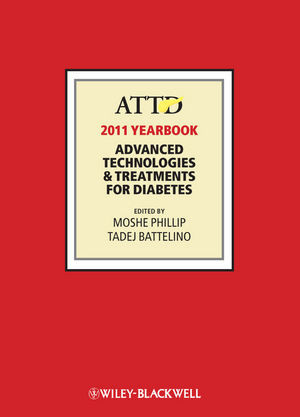

Most ebook files are in PDF format, so you can easily read them using various software such as Foxit Reader or directly on the Google Chrome browser.
Some ebook files are released by publishers in other formats such as .awz, .mobi, .epub, .fb2, etc. You may need to install specific software to read these formats on mobile/PC, such as Calibre.
Please read the tutorial at this link: https://ebookbell.com/faq
We offer FREE conversion to the popular formats you request; however, this may take some time. Therefore, right after payment, please email us, and we will try to provide the service as quickly as possible.
For some exceptional file formats or broken links (if any), please refrain from opening any disputes. Instead, email us first, and we will try to assist within a maximum of 6 hours.
EbookBell Team

0.0
0 reviewsRecent years have seen an influx of new treatment therapies and technologies aimed at achieving better glycaemic control for diabetic patients such as liraglutide (Novo Nordisk) and saxagliptin (BMS/Astra-Zeneca) and insulin pumps, away from the more traditional therapies used (classic insulin therapy, oral hypoglycaemics).
This book outlines these new technologies/treatments by collating the best journal articles published in the last year, and providing expert analysis on each one.
Advanced Technologies and Treatment for Diabetes 3E brings together and critically analyses the last year’s most important articles published in the world’s leading medical journals on this topic. Chapters are focused on the most current hot topic areas such as: new methods of insulin delivery; internet and IT use in treatment of diabetes; bariatric surgery & diabetes; and immunotherapy for type 1 diabetes.
Each chapter includes abstracts of the published articles, scientific conclusions made, as well as annotations and a comments and analysis section from the relevant chapter editor, each of which being a well-known expert in the field.
All researchers in the fields of diabetes, endocrinology and metabolism will find this book extremely useful, as will diabetes technology developers, and specialist endocrinologists involved with the care of diabetic patients.Content:
Chapter 1 Self?Monitoring of Blood Glucose (pages 1–20): Satish K. Garg and Irl B. Hirsch
Chapter 2 Continuous Glucose Monitoring in 2011 (pages 21–41): Tadej Battelino and Bruce W. Bode
Chapter 3 Insulin Pumps (pages 42–55): John C. Pickup
Chapter 4 Closing the Loop (pages 56–82): Eyal Dassau, Christian Lowe, Cameron Barr, Eran Atlas and Moshe Phillip
Chapter 5 New Insulins and Insulin Therapy (pages 83–95): Thomas Danne and Jan Bolinder
Chapter 6 New Ways of Insulin Delivery (pages 96–108): Lutz Heinemann
Chapter 7 Using Health Information Technology to Prevent and Treat Diabetes (pages 109–135): Neal Kaufman
Chapter 8 Technology and Pregnancy (pages 136–156): Lois Jovanovic, Nicole A. Sitkin, Jennifer K. Beckerman and Moshe Hod
Chapter 9 Type 1 Diabetes Mellitus: Immune Intervention (pages 157–173): Jay S. Skyler
Chapter 10 Advances in Exercise, Physical Activity and Diabetes Mellitus (pages 174–202): Howard Zisser, Mark Sueyoshi, Kelsey Krigstein, Andrei Szigiato and Michael C. Riddell
Chapter 11 Diabetes Technology and Treatment in the Paediatric Age Group (pages 203–224): Shlomit Shalitin and H. Peter Chase
Chapter 12 Diabetes Technology and the Human Factor (pages 225–242): Alon Liberman, Bruce Buckingham and Moshe Phillip
Chapter 13 New Medications for the Treatment of Diabetes (pages 243–270): Satish K. Garg and Jay S. Skyler